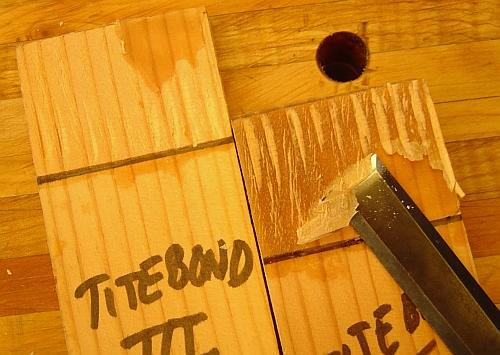Question
Iím using LN-903 Liquid Nails Multipurpose Construction Adhesive in Las Vegas, NV to glue MDF Panels to leveling pads and furred out strips (also made of MDF), and encountering are having numerous delaminations. We are also using it to glue finished trim to backer strips at door locations. Even after one week of clamping, we are experiencing creep and adhesion failure in almost 100% of installations. All products are fire treated and the trim products have sealer and catalyzed finish on both sides.
Upon inspection the cured Liquid Nails has a soft bubble gum consistency and parts from the substrates easily with a sharp chisel leaving an almost clean surface. Normally we would apply liquid nails, adhere the panel, and screw it off where fasteners would not show. Panels continue to delaminate from the walls - sometimes a week to ten days later. We have tried applying adhesive to the MDF and pressing it against the furring strips them pulling it away and applying more adhesive to those witness spots. It doesn't seem to make a difference. Has anyone else experienced these problems working in a hot environment?
Forum Responses
(Adhesive Forum)
From Gene Wengert, forum technical advisor:
It sounds like you are expecting this construction adhesive to cure and get hard, but that is not characteristic of construction adhesives. They do remain soft and pliable and are affected by heat. Liquid Nails has a 43 page booklet on the use of their various adhesives; it is an excellent source of info.
Do you put the Liquid Nails on in a serpentine pattern, then push the panel against the adhesive beads, then pull the panel off and allow the solvent to quickly evaporate and then put the panel back on (per LN instructions)? LN-910 and LN-710 are designed for paneling, so you might want to try them rather than LN-903.
Sometimes when MDF is manufactured, a wax is added to increase water repellency. Sometimes the surface is burnished from the heat in manufacturing. Try touch sanding (very light, one pass) the MDF prior to gluing in order to obtain a better wood surface for gluing.
The solvent based Liquid Nails we could use almost to "weld" part together. This product needs close surface contact. He mentioned the bridging qualities are less than the solvent based Liquid Nails though he claimed the cured bond was stronger. Our current temp and humidity is around 105 and 11% humidity inside the building. In application it is almost as if this adhesive flashes and "skins over" if conditions are not optimal. Unfortunately the contract specifies a low VOC adhesive. Polyurethane was sticking to both the MDF and the back finished products but requires an exception in the contract.
